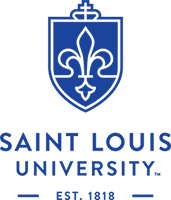Newswise — ST. LOUIS – While golf doesn’t hold the same kind of injury risk as high impact sports like football or hockey, the repetitive motion and twisting of the spine can set the stage for potential injuries that may be underestimated for this low-impact lifetime sport.
Mike Markee, PT, ATC, instructor of physical therapy and athletic training at Saint Louis University, has spent time on the senior PGA tour and developed exercise and fitness programs for golfers.
“It is possible to avoid injury and improve performance, especially through muscle strength and proper form,” Markee said. “The great thing is that the same things that help you avoid injury also will improve your game.”
It comes down to three things, Markee says.
ONE: WARM UP and KEEP MOVINGThere can be a lot of down time in golf, and so it takes deliberate focus to keep moving. Stretch before, during and after the game. If you’re able to walk and the course allows, skip the cart and earn a few miles under your belt by the end of the game.
TWO: STRENGTHEN CORE Golfers use the muscles closest to the spine, including hip and shoulder muscles. This is where the power comes from in your golf swing, and, likewise, a weakness in your core can lead to an unbalanced swing, with some muscles compensating for others.
“It used to be thought that flexibility was most important thing in golf. Golfers worried that too much muscle would cause them to lose flexibility,” Markee said. “But, with rise of Tiger Woods and now Rory Mcllroy, we’ve seen that you can develop more power by training the right muscles. Now we know that strength training and flexibility aren’t polar opposites, and, in fact, core strength training can actually improve your performance.
“From a health care perspective, a muscle weakness in the core or hip is something we can remedy through physical therapy or athletic training.”
THREE: DEVELOP GOOD BODY MECHANICSGolf’s main injury risk comes from the repeated motions of the swing. Working with a pro to learn to swing properly can help you reduce forces on the spine due to twisting and rotating and ensure that you aren’t developing bad habits that can take their toll on your back, shoulder and elbow.
Amateur golfers generate greater sheer force on their spine compared to professionals, Markee notes.
“Usually back pain comes from the twisting that puts stress on the spine,” Markee said. “Back injuries from golf are very common.
“If golfers lose their spine angle on the back swing, it can increase forces on the spine, causing back pain. The torsion can be damaging if done over and over.”
Learn from a pro about proper swing to develop good body mechanics and avoid pain down the line, and, if you do have pain, consult a physician sooner rather than later to avoid exacerbating the problem.
Long a leader in educating health professionals, Saint Louis University offered its first degree in an allied health profession in 1929. Today the Doisy College of Health Sciences offers degrees in physical therapy and athletic training, biomedical laboratory science, nutrition and dietetics, health informatics and information management, health sciences, medical imaging and radiation therapeutics, occupational science and occupational therapy, and physician assistant education. The college's unique curriculum prepares students to work with health professionals from all disciplines to ensure the best possible patient care.
